|
|
|
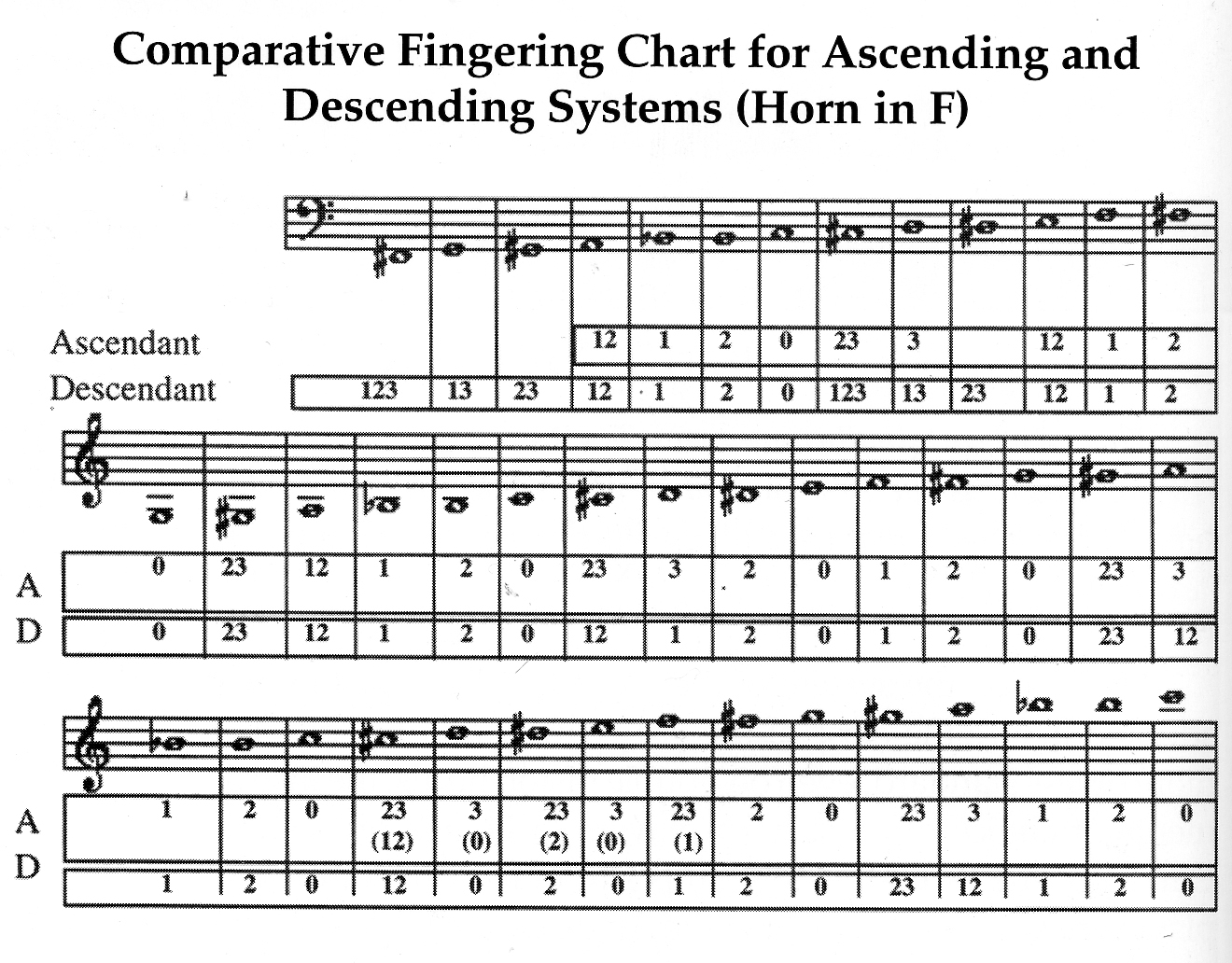 The fingering chart for the ascending F horn is not significantly different from the standard (descending third valve) horn. In fact any fingerings using only the first or second valves alone or in combination remain valid although not necessarily preferred. Observe that the combination of first and third valve is never used on the ascending horn. (Why? Think about it.) Note also that some notes in the low register are not possible on the ascending F horn. For this reason horn makers offered both ascending and descending models. First and third ("high") horn players used the ascending horn, while second and fourth players used the descending horn, so as to have available the full lower range. The ascending system persisted in France throughout the first half of the twentieth century. Full double and compensating ascending piston valve double horns in F and Bb became the standard in France when they were finally overtaken by the larger bore rotary valve German models in the nineteen seventies. |
|
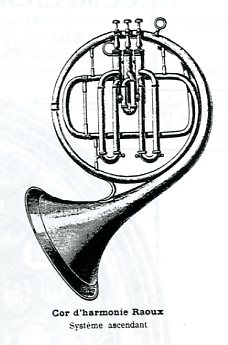 |
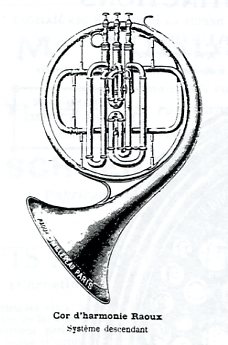 |
|
|
|
|
|
|
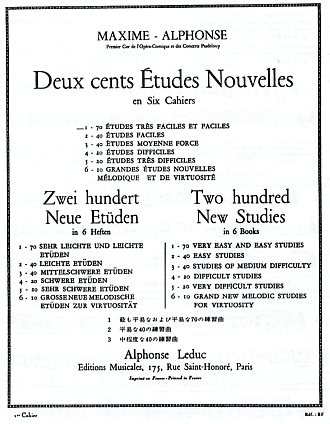
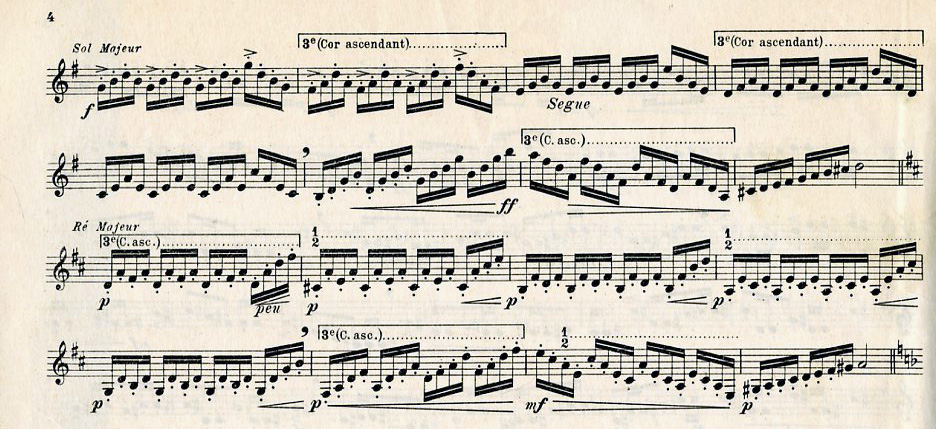
Maxime-Alphonse, Deux Cents Études Nouvelles, 4e Cahier, p.4 Maxime-Alphonse gives the following instruction for this étude: L'élève observera, s'il joue le Cor avec le 3e piston ascendent, les doigtés indiqué. Mais il devra également travailler des doigté ordinaires du Cor descendant, qui seront pour lui un bon travail de mécanisme.Note that the third valve on a descending Bb horn produces the same harmonic series (G concert) as the third valve on an ascending F horn. Thus it is possible to play the above etude as intended by Maxime-Alphonse by substituting the third valve on the Bb side of the modern double horn wherever he indicates "3e (cor ascendant)." |
|